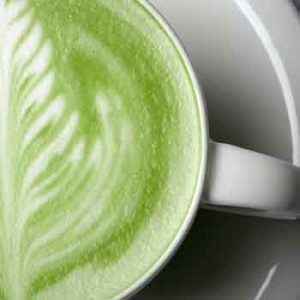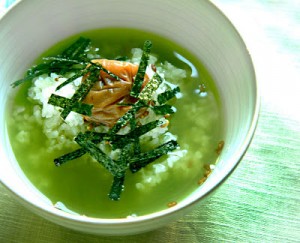
More evidence that low-calorie sweeteners are bad for your health
Studies show that artificial sweeteners can raise the risk of hypertension, metabolic syndrome, type 2 diabetes and heart disease, including stroke.

You want to get the benefits of green tea – but drinking endless cups of the stuff can occasionally lose its charm.
Never fear, there’s more to green tea than, well…tea.
The reasons for including more green tea in your diet are compelling. Green tea is rich in antioxidant polyphenols. Studies show that it contains around 20-45% polyphenols by weight, of which 60% to 80% are catechins such as epigallocatechin-3-gallate (EGCG) – the most studied and bioactive polyphenol in tea.
EGCG is an important anti-inflammatory and is thought to be responsible for the may health effect of green tea including it’s protective effect on the heart, the brain, and the gut and its weight loss, anti-diabetes and anti-cancer properties. Green tea is approximately 20% to 45% polyphenols by weight, of which 60-80% are catechins such as EGCG.
Black, green, white
All teas – black, green and white – are derived from the same plant: Camellia sinensis. In addition to antioxidants, tea leaves also contain beta carotene, vitamins B2, C, D and K and potassium. Even the caffeine in tea, when taken in moderation, has health benefits since it helps boost metabolism, burn fat and acts as a mild diuretic.
The dominant antioxidant polyphenols in black teas – theflavins and thearubigins – have been shown to be as beneficial as those in green tea.
Green tea is produced by lightly steaming then drying the fresh cut leaves. It is rich in a group of antioxidant polyphenols called catechins.
White tea is a minimally oxidised and contains similar catechins to green tea.
Research shows that although the dominant polyphenols in black teas are different, the beneficial effects are the same.
What type of green tea?
Green tea is sold in a multitude of different forms: as single tea bags, loose-leaf tea, and also in powdered forms like sencha and matcha.
Of these sencha and matcha may be the least familiar to many of us. And yet these types of green tea open up all kinds of possibilities for incorporating green tea into a wide variety of recipes – as well as making a delicious cuppa.
The difference between these two powdered form of green tea is subtle but important. Sencha is an everyday powdered tea made from normally cultivated green tea leaves and is as rich in beneficial phytonutrients as normal tea. Matcha is cultivated and processed in a very specific way.
Thriving in the dark
Starting a month before harvesting the leaves used in matcha tea are grow in shade. Each week the amount of sunlight the plants get is restricted more and more by draping a layer of burlap-like material over them like a canopy until they are in near total darkness.
This process causes the tea leaves to naturally widen and flatten out which, when ground, results in a much finer particle size than sencha. Growing in the shade also helps preserve amino-acids in the tea which gives it a unique sweet/savoury flavour known as umami (recently recognised by western scientists a unique “
Not surprisingly really good quality matcha can be very expensive, though you need only a little to add benefit to your diet. If the price proves off-putting, there is no reason not to use sencha instead. In fact sencha has somewhat more EGCG because it is grown in full sunlight until the moment it is picked. Matcha, on the other hand, has more of the amino acid L-theanine which aids relaxation and mental alertness.
Their tastes do differ however. Sencha is smooth with slight astringent aftertaste, while matcha has a creamier feeling on the tongue and no aftertaste.
Get creative
Using powdered teas means you are ingest the whole leaf, not just the infusion and it has been estimated that one cup of matcha is the equivalent of 10 cups of green tea infusion in terms of its nutritional value and antioxidant content (you can also get powdered back teas as well – worth experimenting with for lates and iced teas).
Of course you could just take a supplement too – green tea in concentrated capsule form or liquid is a popular choice.
But given all these delicious choices, it’s worth experimenting with something a little more satisfying. Here’s come ideas to get you started:
The perfect cup
Tea is treated with a vast number of pesticides. Many teas come from China where DDT is still legal. To avoid a toxic cup always choose organic. Use water that has boiled for no more than 10 seconds.
Unlike black teas which should be infused for 5 minutes, green tea leaves need only 2 minutes. Shorter or longer times will impair the flavour without giving any additional antioxidant benefits. For a little something different try brewing a pot of green tea with a few slices of orange, or a few mint leaves in it. Drink hot or poured over ice.
For a cup made from powdered tea use one heaped teaspoon per cup and whisk into hot water until all the tea is dissolved.
Dressings and marinades
Add sencha or matcha powders to dressings and marinades. Use a strong tea infusion in place of water in recipes and marinades, or try using green tea instead of water for steaming fish or vegetables.
Add a sprinkle
Try sprinkling a little bit of matcha on yoghurt or fruit deserts, or on salads and soups.Try mixing with garlicky butter instead of the usual herbs to make an unique spread for garlic bread or toast, or sprinkle over ricotta cheese on toast.
Green tea noodles
These lovely buckwheat noodles are infused with green tea powder. The tea adds a subtle flavour and a nutritional boost. Enjoy hot with steamed or stir fried vegetables, or cold in an Asian inspired salad with ingredients of your choice like tofu, crayfish, mango, spring onions, and a spicy garlic and ginger dressing.
Green tea soup
When you have an upset tummy or are recovering from illness, or you simply want a light nourishing meal, this soup (known in Japan as Ochazuki) will do the trick. Pour strong green tea over a cup of boiled sticky rice and little bit of cut nori (seaweed). Season lightly to taste and enjoy.

Ochazuki is a very popular, traditional Japanese soup made by pouring hot green tea over rice with savoury toppings
Green tea smoothie
You can add green tea powder to almost any smoothie recipe. It’s great with vegetable based drinks and also delicious with sweet green melon or grapes. For a quick smothie try this (also a great way to use up slightly over-ripe bananas): In a blender mix 1 banana (preferably a bit ripe and if you want your drink extra cold, frozen) 120 ml (4 oz) coconut milk, or if you prefer semi-skimmed cow’s milk, ½ tsp matcha powder, ¼ tsp vanilla extract, and if preferred add a sweetener of your choice to taste. Blend until smooth.
Green tea latte
These days you can buy these on the go from most coffee vendors, but why not make one at home? To make a cup whisk 1 tsp of matcha powder into 120 ml (4 oz) of boiling water. Once it’s dissolved mix in 180 ml (6 oz) of either regular or almond milk that has been whisked/frothed up. Sweeten if you prefer with honey or agave.
Green tea cake
Change things up at tea time with the lovely recipe for a green tea cake. It uses less fat than most cake recipes and derives a dense moist texture from the inclusion of apple sauce and yoghurt. Enjoy!

Please subscribe me to your newsletter mailing list. I have read the
privacy statement